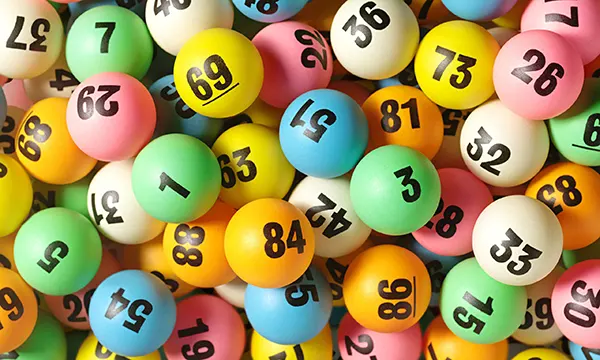Why do so many people keep buying lottery tickets despite overwhelming odds? The answer lies not in rational calculations, but deep within the mechanisms of our minds. Psychological patterns, cognitive distortions, and the emotional weight of “almost winning” all contribute to our unshakeable belief in that life-changing jackpot. Understanding how our brains interpret chance and randomness reveals the compelling nature of lotteries in modern society.
How the Human Brain Interprets Randomness
Our brains are naturally inclined to detect patterns—even when none exist. In the context of lottery games, this tendency leads us to believe that past outcomes somehow influence future results. Known as the gambler’s fallacy, this misconception makes people think a winning number is “due” simply because it hasn’t come up recently.
Moreover, our brains process randomness poorly. Instead of grasping the true odds (e.g. a one in several million chance), we often rely on intuition, which grossly misrepresents probabilities. This flawed logic leads players to feel a sense of control or strategy, despite the lottery being entirely based on luck.
Another element is the reward circuitry in the brain. The anticipation of a win activates the same neural pathways associated with real monetary gains, fuelling excitement and reinforcing the habit—even in the absence of actual reward.
The “Near Miss” Effect
One of the most powerful psychological triggers in gambling is the “near miss.” When lottery players get a ticket that is close to winning—missing the jackpot by one number, for instance—they experience a spike in dopamine. This is nearly identical to the chemical response of a win, causing motivation to try again.
Neurologically, the near miss activates brain regions involved in reward processing, such as the anterior cingulate cortex. It tricks the brain into thinking success is within reach, encouraging persistent play. This response is not rational—it’s an evolutionary leftover from when pursuing “almosts” could lead to actual rewards, such as food or shelter.
Modern lottery systems exploit this by showing how “close” a ticket was to winning, reinforcing the idea that the jackpot is attainable, even when mathematically it’s not.
How Lotteries Create the Illusion of Winning
Lottery companies design their games and advertising to create a perception that winning is common and achievable. Success stories of average people striking it rich are prominently featured, while the millions of losing experiences are hidden in the background. This creates an “availability heuristic”—a cognitive shortcut that makes us judge probability based on easily recalled examples.
Marketing techniques also exploit emotional hooks, such as imagining what one would do with millions or how life would change instantly. These narratives create vivid imagery, which the brain processes as more likely to occur, further enhancing perceived odds of success.
Even small wins or free ticket replays serve to maintain engagement. These minor rewards reinforce the behaviour and make the process feel more rewarding than it actually is. Over time, this cultivates a belief that “I’m getting closer” despite the unchanged, astronomically low odds.
Media and Confirmation Bias
The media plays a central role in reinforcing our belief in lottery wins. Success stories are widely shared across news platforms and social media, while stories of lifelong losses are virtually nonexistent. This disproportionate exposure confirms players’ beliefs that winning is a genuine possibility.
This is compounded by confirmation bias—the tendency to seek and favour information that aligns with one’s pre-existing beliefs. Lottery participants are more likely to remember stories of winners and forget about consistent losses. They may also selectively interpret their own experiences, such as viewing small wins as validation of a “lucky streak.”
These biases keep players psychologically invested. Once a person believes that winning is likely, every piece of information is filtered through that lens, making it harder to reassess the real odds logically.

Avoiding Cognitive Traps in Lottery Gambling
Understanding the psychological pitfalls that influence lottery behaviour is the first step in developing a more rational approach. Recognising cognitive biases such as the gambler’s fallacy and confirmation bias can help people make more informed decisions about their participation.
Setting clear financial limits and treating lottery play as a form of entertainment—not investment—can provide a healthier mindset. Players should be aware that lottery systems are engineered to favour the organisers, not the participants. This awareness can reduce the allure of chasing an unrealistic jackpot.
Additionally, educational initiatives that explain probability, randomness, and brain responses to near-misses can empower individuals to recognise when they are falling into common psychological traps. Promoting critical thinking around gambling can counterbalance emotional and impulsive behaviours.
The Role of Responsible Gambling Tools
Today, many jurisdictions encourage or mandate responsible gambling tools. These include spending limits, self-exclusion programmes, and time-out features. When used properly, they help individuals maintain control and avoid spiralling into problematic behaviour.
Educational campaigns run by health and gaming authorities also focus on breaking down the myths surrounding lottery play. These messages often clarify the statistical realities and remind players that every ticket has the same odds, regardless of past outcomes or intuition.
Technology can also support these efforts. For example, apps and websites now allow players to track their spending and analyse their gambling habits. By visualising losses and frequency, players can make more objective decisions and avoid the seductive narrative of being “close” to a win.